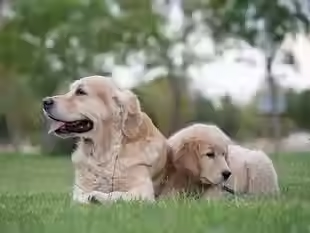


If you’ve ever come home to chewed shoes, scratched doors, or a neighbor’s report that your dog barked the entire time you were gone, you might be dealing with separation anxiety. This challenge can be stressful for both you and your dog—but the good news is, there are plenty of things you can do right from home to help your pup feel calmer and more confident while you’re away.
___
🪧 Recognizing the Signs of Separation Anxiety
Before you can help your dog, you need to know what separation anxiety looks like. Common signs include:
Whining, barking, or howling when left alone
Destructive chewing or scratching
Potty accidents indoors, even if your dog is house-trained
Drooling, pacing, or trembling
Attempts to escape confinement
Some dogs show these signs as soon as you pick up your keys—others may be fine for a few minutes before anxiety sets in.
___
⏳ Step 1: Find Your Dog’s Threshold
Every dog has a “tipping point” where they shift from relaxed to anxious. Watch your dog when you leave the house (a camera or phone recording can help) to see how long they stay calm. If your dog begins pacing after 30 seconds, that’s your starting point. If it’s 5 minutes, start there. The goal is to train below that threshold so your dog doesn’t tip into full-blown panic.
___
🚪Step 2: Practice Short, Positive Departures
Once you know their threshold, begin desensitization training—short absences that your dog can handle without stress. Leave for just a few seconds or minutes, then return while they’re still calm. Gradually increase the time you’re gone. Always pair these absences with something your dog enjoys, like a stuffed Kong, puzzle toy, or safe chew. This builds a positive connection with your departures.
___
😌 Step 3: Keep Goodbyes & Hellos Low-Key
It’s tempting to give long, emotional goodbyes or over-the-top greetings, but this can make your comings and goings feel like big events. Instead, stay calm. Greet your dog after they’ve settled. Your relaxed energy communicates that being apart is normal and nothing to worry about.
___
💖 Step 4: Create a Safe & Engaging Environment
Set up a “comfort zone” for your dog—a crate they enjoy, a quiet room, or a cozy corner with a familiar bed and blanket. Provide toys or activities to keep their mind occupied while you’re gone. Mental enrichment, such as food puzzles, scent games, or frozen treats, can help reduce stress and pass the time.
___
📝 Step 5: Build Routines & Boundaries
Dogs thrive on predictability. Keeping consistent departure and return routines helps them understand what to expect. It can also help to practice “independence training” while you’re home—teaching your dog to relax in another room while you go about your day. This builds confidence when you’re out of sight.
___
🆘 Step 6: When to Get Extra Help
Some dogs have more severe separation anxiety and may need professional guidance. A trainer experienced in behavior modification can help create a custom plan for your dog. In some cases, a veterinarian may also recommend calming aids or medication to help your dog learn without feeling overwhelmed.
___
🐾 Final Thoughts
Separation anxiety isn’t about a dog being “bad”—it’s about a dog feeling unsafe or unsure when you’re not there. With patience, structure, and positive associations, you can teach your dog that alone time is safe and manageable. Start small, stay consistent, and celebrate progress along the way.
Over time, you’ll both gain the peace of mind that comes from knowing your dog can relax at home—even when you’re not there.





